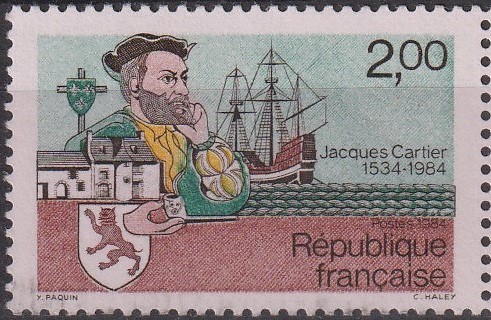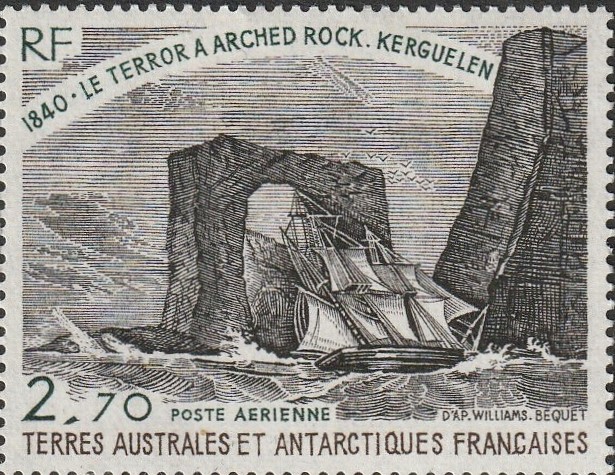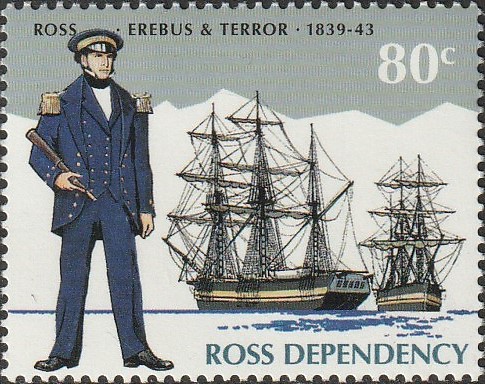| The Northwest Passage is the maritime space in northern
Canada that theoretically transits through the Arctic islands of northern
Canada between Davis Strait and Baffin Bay in the east, separating Greenland
and Canada, and the Arctic Ocean, where the Bering Strait provides access to
the Pacific. |
 |
 |
| Sent by Henry VII of England, John Cabot
in 1497 is the first to make the hypothesis of a passage to the East by this
way. On board Matthew, he sailed across Newfoundland and
explored the coast. |
From 1576 to 1578, Martin
Frobisher undertook three voyages to the Canadian Arctic to find
the passage. In 1576, he discovered Frobisher Bay, an arm of the Labrador
Sea about 230 kilometres long, located southeast of Baffin Island. |
 |
 |
| On August 8, 1585, English explorer
John Davis entered Cumberland Sound (Baffin Island). |
On three voyages between 1535 and 1542,
Jacques Cartier explored the Gulf of St Lawrence and sailed
up the St Lawrence River. However, he sailed south of the Labrador
Peninsula. |
 |
 |
| After a first attempt in 1607 by the east of Greenland,
Henry Hudson left to explore the North American east coast,
and went up the river, which now bears his name. With new financing, he left
in 1610 but the crew of the Discovery mutinied and abandoned him in a
rowboat. |
 |
 |
| The first Kamchatka expedition led by Vitus Bering,
a Danish officer serving the Russian Imperial Navy, skirts the peninsula but
does not see the American continent. In 1741 with the Saint Peter,
Bering de Petropavlovsk led his expedition to North America; he mapped the
Alaska region before his ship sank off the Kamchatka. Under the command of
Alexey Chinikov, the second ship, Saint Paul discovers the
coasts of northwestern America (the Alexander archipelago of today Alaska). |
 |
|
In 1818, the second secretary of the Admiralty, John Barrow, sent an
expedition led by John Ross. He enters Lancaster Sound but
Ross believes there is no way out, takes clouds for a mountain range
(“Crocker Mounts”) and returns to London. In 1818, on his first Arctic
voyage in search of the Northwest Passage, he visited the northwest coast of
Greenland. |
 |
|
John Franklin participated in the HMS Investigator expedition, led by
Captain Matthew Flinders to make a detailed map of
Australia. Back in Europe, he served aboard HMS Bellerophon during the
Battle of Trafalgar in 1805. Between 1819 and 1822 John Franklin
led a land expedition on the banks of the Coppermine River. In 1829-1833, on
a second Arctic expedition, John Ross and his nephew
James Clark Ross reached the Magnetic North Pole on June 1,
1831. |
 |
| |
 |
 |
 |
| With his experience in polar missions, navigation through
the pack and his knowledge of magnetism, Ross was chosen to fulfill the last
wish of John Barrow, second secretary of the Admiralty: Between 1839 and
1843, he commanded scientific exploration with the ships HMS Erebus
(370 tons) and HMS Terror (340 tons) in the extreme
latitudes of the South of the Earth. Both ships are old bomb vessels rigged
in three-masted boats and with reinforced hull. |
 |
 |
 |
| In 1845 the two ships Erebus and
Terror were chosen by John Franklin to lead a new expedition to the
Canadian Arctic to map the still unknown parts of the Northwest Passage. The
crew had to overwinter on the pack ice aboard their ships and subsequently
tried to survive on King William Island. Many men perished, including
Franklin, and the rest of the crew died trying to return to Canadian
territory. In the absence of news, several research companies will be
conducted, under the leadership of Lady Franklin. |
 |
 |
| The Northwest Passage was not crossed by sea until 1906,
when Norwegian explorer Roald Amundsen completed a
three-year journey with the fishing vessel Gjøa. At the end
of his journey, he sends a telegram from the town of Eagle in Alaska.
Gjøa is a fishing vessel of 21 m long and 48 tons, rigged
in sloop, built in 1872. The crew is limited to 6. |
 |
|
Between 1940 and 1942, a motorized schooner, St Roch made
the first complete crossing from west, followed by a crossing from east to
west (round trip). For the first crossing of the Northwest Passage, Larsen
followed the road to Amundsen. For the return trip, Larsen
explored a much more northern route. On 29 May 1950, St Roch was the first
ship to tour North America, from Halifax, Nova Scotia, to Vancouver via the
Panama Canal, before becoming a museum ship in 1954. |
 |
1-Erebus
winters (1845-46) off Beechey Island
Erebus seized by ices off King
William Island (1846-1848)
2-Discovery of the wreck of Terror in 2016
3-Discovery of the wreck of Erebus
in 2014
|
| Information on map from the book
of Michael Palin "Erebus: The Story of a Ship" |
